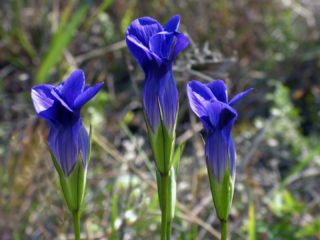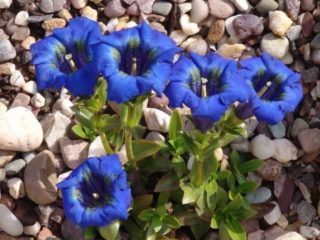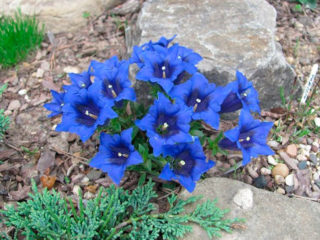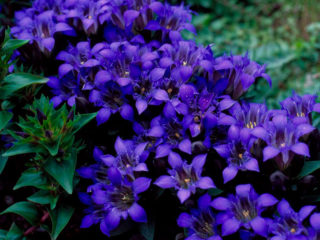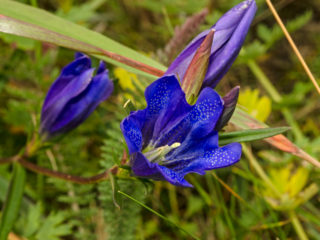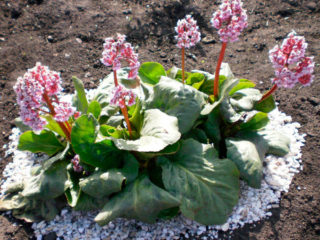Content
The cruciform gentian is a wild plant from the Gentian family. Occurs on pastures, meadows, slopes and forest edges. The culture is distinguished not only by its decorative qualities, but also by its therapeutic effect. In alternative medicine, formulations based on gentian roots are used for rheumatism, gout, arthritis, hypertension, diseases of the gastrointestinal tract, kidneys, liver, skin and many others. In official medicine, preparations containing an extract from the rhizomes of the culture are also used.
Description of the cruciform gentian
The cruciform gentian (Gentiana cruciata) is also known as the kryzhagobnaya garychka, the kryzhagobnaya garachuyka, the feverish man, the falcon flight, the falconer. Based on the botanical description of the cross-leaved gentian, the culture is a perennial herb from the Gentian family. Reaches 75-100 cm in height, roots are not very long, dark brown in color. The cruciform gentian is distinguished by densely leafy single or group greenish-purple stems and elongated leaves that have a characteristic bend towards the ground.
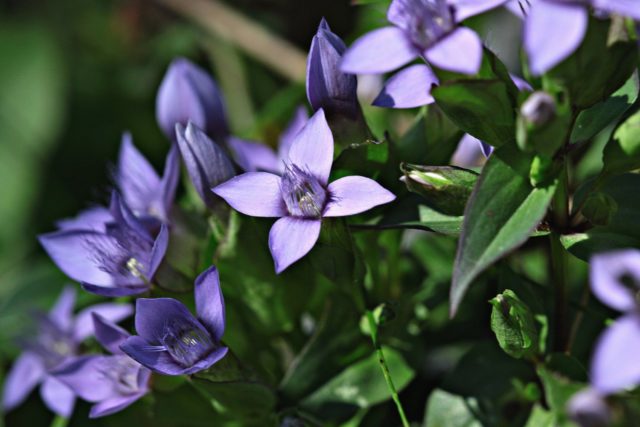
The flowers of the gentian are cruciform goblet, each inflorescence has rounded-elongated petals, bent at the ends
The fruits of the culture ripen in early autumn. Elongated seeds are present in large numbers inside the seed pod. The flowering of the cruciform gentian begins in late May or early June. The culture is considered frost-resistant, it does not require additional shelter for the winter. The plant easily tolerates drought, feels great both in partial shade and in a sunny place.
Where and how does the cruciform gentian grow
According to the description of the cruciform gentian (pictured), the culture grows well both in meadows and forest edges, and in flower beds. The natural habitat of the plant is sparse forests, thickets of shrubs and dry meadows of Western Siberia, Central Asia, the Caucasus and Europe. Due to urbanization, the transformation of river valleys and other negative factors associated with human intervention in nature, the natural reserves of the medicinal herb have significantly decreased. The cruciform gentian prefers open ground, well moistened and drained. It is quite simple to grow a culture in a garden plot, it is worth preparing a soil rich in lime for it.
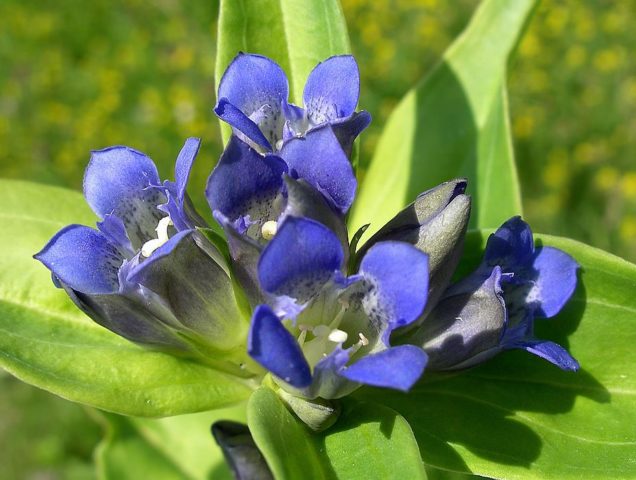
The cross-shaped gentian can be used to decorate flower beds and flower beds
The composition and value of the plant
The rhizomes of the cruciate gentian contain glycosides (gentiamarin, gentiopicrin, genciin and others), iridoids (secondary metabolites), plant polyphenols (flavonoids and catechins), fatty and essential oils, ascorbic acid, as well as tannins, resins and mucus. Such a diverse composition makes the culture in demand not only in folk but also in traditional medicine.
Beneficial features
For medicinal purposes, mainly the roots of the cruciate gentian are used.

The famous ancient Roman philosopher and physician Galen mentioned in his treatises about the healing properties of cruciate gentian and its high effectiveness in the treatment of diseases associated with impaired water-salt metabolism (rheumatism, gout)
Application in traditional medicine
Decoctions from the roots of gentian cruciform have long been used in folk medicine to stabilize the digestive process and increase appetite. They were used to treat heartburn, gastritis with low acidity, and various diseases of the gastrointestinal tract. Bitter glycosides in the roots have a positive effect on gastric secretion. Therefore, they are part of many fees intended for the treatment of ailments affecting the gastrointestinal tract.
Decoctions and infusions recipes
One of the most popular healing recipes made from bitter roots is the "cold" infusion. It is used for intestinal atony, persistent heartburn, lack of appetite or chronic constipation. A number of traditional healers use the infusion in the complex therapy of respiratory diseases (including tuberculosis). It prepares as follows:
- 1 teaspoon of dried crushed roots is poured with 400 ml of pre-boiled and cooled water.
- The container is removed to a dark place with a temperature not higher than room temperature and insisted for 8-12 hours.
- The liquid is filtered, the raw material is squeezed out.
- Take the infusion 3 times a day, 100 ml shortly before a meal.
The broth is used as lotions and compresses that perform a disinfecting function. The composition accelerates the healing of purulent wounds. To prepare the broth:
- Take dried crushed raw materials in the amount of 3 teaspoons and fill in with purified water (750-800 ml).
- The mixture is brought to a boil, after which the heat is reduced to a minimum and cooked for 15-20 minutes.
- The container is removed from the heat and insisted for at least three hours.
- The liquid is filtered, after which it can be used to create compresses and lotions.
Bitter tincture is prescribed for various disorders of the digestive tract. To make it:
- A few teaspoons of bitter roots are mixed with the herb of the small centaury and the fruits of orange (50 g each).
- Dried turmeric is added to the mixture in an amount of 30 g and poured with alcohol (60 °) or high-quality distillate.
- Insist on the product for three weeks. After squeezing, straining and filtering, the bitter tincture is ready for use. They drink it in the amount of 25-100 drops (depending on the diagnosis), stirred in a glass of water.
To prepare the extract, take 50 g of crushed roots and pour 250 ml of alcohol into them. After the remedy has been infused for a month, it is used 15-30 drops shortly before a meal. The herbal collection, including centaury, St. John's wort, rhizomes of the cruciate gentian, yarrow, medicinal smoke and wild chicory, are poured with hot water and taken from gastritis (chronic or acute).
Admission rules
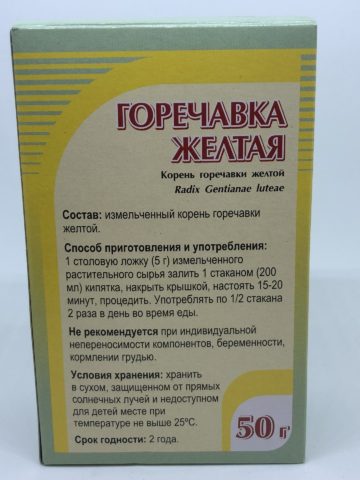
When treating ailments associated with metabolic disorders, as well as arthritis, gout and rheumatism, use a decoction of gentian
They drink it in an amount of 90-100 ml three to four times a day. With hepatitis, take a decoction of buckthorn bark, cruciform gentian, dandelion rhizomes and celandine. In case of infection with roundworms or pinworms, they use a collection of bitter roots, wormwood, tansy and chamomile flowers. All ingredients are taken in equal proportions, poured with purified water and boiled for 15 minutes.
Limitations and contraindications
The cross-leaved gentian plant contains alkaloids and compounds that can cause intoxication of the body. Therefore, before using medicines, you must read the instructions and strictly observe the dosage.
It is not recommended to take drugs based on this culture during lactation and pregnancy, as well as for hypertension and peptic ulcer disease.
Collection and procurement of raw materials
In medical practice, rhizomes of the cruciate gentian are used. They begin to harvest them in late autumn, when the vegetative mass dies off. Medicinal raw materials are obtained from plants that have reached the age of four and older. Only specialized farms with appropriate licenses can harvest the roots of a crop.
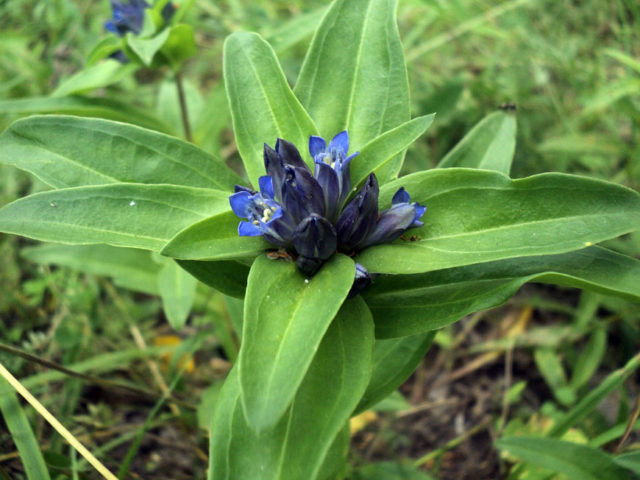
In industrial harvesting, the rhizomes and roots of the cruciform gentian are heat treated using electric dryers
Conclusion
The cruciform gentian is a perennial herb with great therapeutic potential. Bitter roots and rhizomes have long been used in folk medicine to treat various diseases of the gastrointestinal tract, pancreatitis, rheumatism, gout and many other ailments. Extracts and decoctions of cruciate gentian are used to combat parasites and stimulate the secretory function of the stomach. You can plant a culture in your own garden plot, since it is distinguished by its unpretentiousness and frost resistance.

